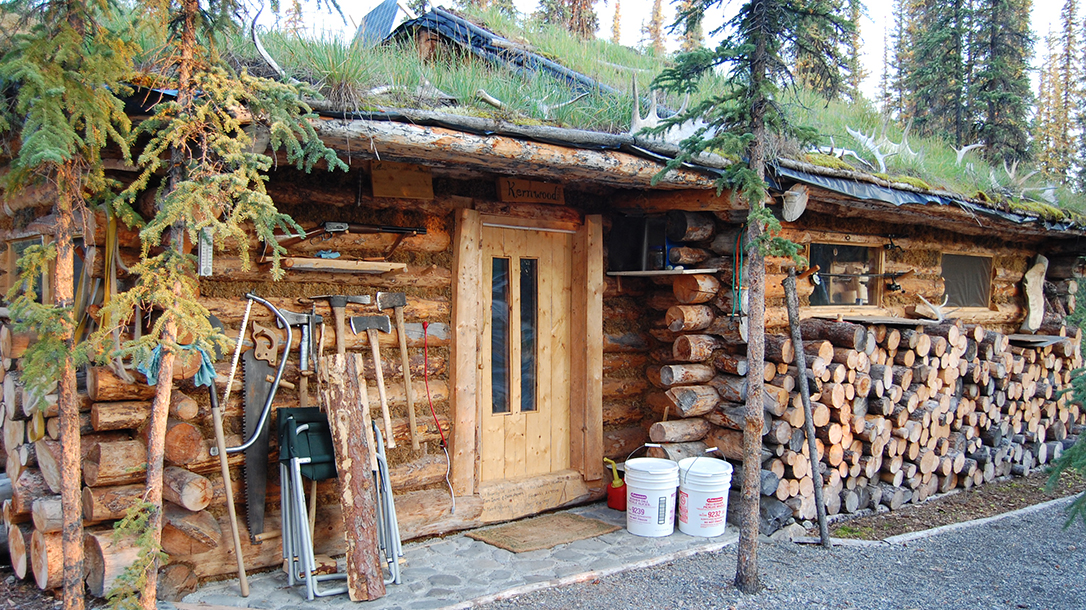In our small hometown in Alaska, I am frequently stopped by those who wish to compare, share or query me about a particular element of log cabin construction. My wife, Jeanie, and I have built five log structures at our remote homesite snuggled deep in the foothills of the Brooks Range of Arctic Alaska. Yes, five. Building a log cabin actually isn’t that hard. It is there where we spend our summers and speak wistfully of wintering over “just one more time.”
Our Class on Building a Log Cabin
The truth is that we are at the time of life when it is appropriate to share our experiences and hard-won knowledge with the younger generation. That is not to say we will never again indulge our fantasies of experiencing the magic of four seasons, dancing auroras and the blissful solitude that only the Arctic offers.
Building a log cabin is like any other physical task: There are tricks learned by “doing” and those revealed to those who have “done it.” Here are some of the tricks and insights that have come my way over the past 22 years of building with trees. This collection of odds and ends is not intended to be an all-inclusive how-to manual on cabin building, but offered instead with the hope that it will make a first-time log wrestler’s experience just a little easier.
Tooling Up for Building a Log Cabin
I’ve found that making a list of all the tools I thought I would need was very important. Then it was easier to research how to use those I was unfamiliar with. Old timers are a wonderful source for this information and you may hear some grand stories about old-fashioned ways of doing things or how our ancestors lived.
Libraries provide a source of knowledge and antique shops offer tools. However, you have to be certain both will be usable—many are not. I recommend following up the tool list with one for hardware.
The first item we built was a large sawbuck (sawhorse). There is no end of uses for this, and having one ready when you start work on the cabin or cabin logs saves time.
Tree Selection
We use only dead standing trees, leaving the living to the forest. Taking a living tree means far more physical work due to the water weight. A green tree will warp and split when drying, and during the winter it will form ice on the inside wall of a heated structure.
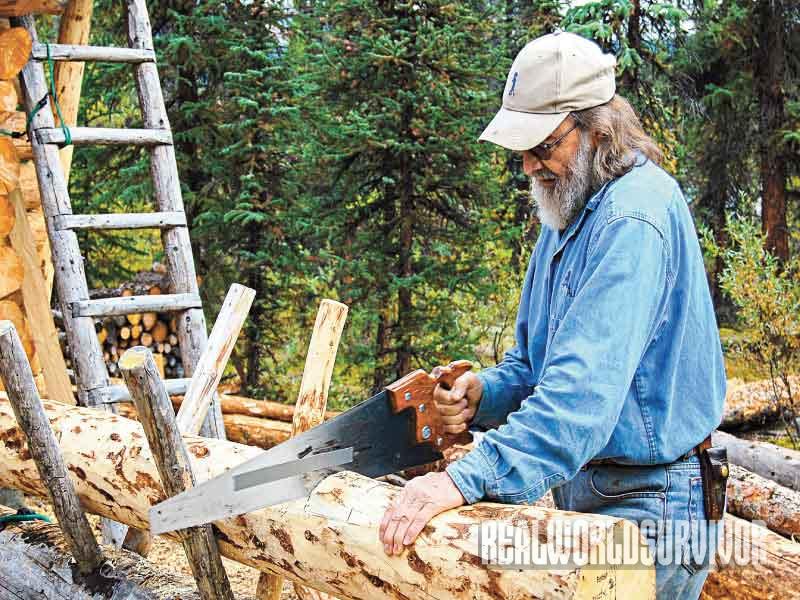
If you use a windfall or a log washed up by the river, be sure to inspect it very carefully for insects, rot and sand. Insects and rot make for a weak log, and sand will dull any cutting blade. While removing the limbs from a large tree, watch for those that are usable as dowel pins. This can save you time searching for them later.
Log Placement
Once you have the sill logs secured in position, place the next log on the wall directly above where it will permanently reside, mark the notches with a marking pen, roll the log 180 degrees and use a ratchet strap to secure it to the logs below.
Cut the notches, then rotate the log into position and add moss or your chinking material of choice. On each side of windows and doors, dowel through the log, the one below it, and into a third log. Use a 1.5-inch or larger auger and then pound a dowel into the drilled hole. Be sure that the dowel seats properly. Repeating this with every course (layer of logs) will stabilize the wall when you cut the rough opening.
Cutting Without A Mill
Ripped lumber and “puncheon logs” can be cut without a mill or ripping guide. Select two short logs and cut a V-shaped notch in the center of each. The V-notch should reflect the diameter of the logs you plan to rip. These logs will serve to hold the log you wish to rip off the ground. Skin your lumber log and place it in the V-notches. Mark rip line(s) down the length of the log and vertical lines on each end.
Drive a post into the ground at one end of the log, far enough off center so that it will not be hit by the saw blade. Secure it with a double-headed nail (also called a duplex nail) to the log. This will stabilize the log as you rip it and make for easy removal of the nail. I like to make the end cuts completely through the log and to the full length of the saw bar first, then complete the cut.
Eave & Roofing
During construction, remember the eave support logs need to extend beyond the walls if an overhang is desired. I tend to cut log ends too soon; that requires some retrofitting.
Sod is our roofing material of choice. I put a cheap fiberglass tarp over the crown and multi-fold it because I don’t take the time to smooth and even the rafter ends. Next comes good quality plastic roofing, then another layer of cheap tarp. The sod roots will grow into the upper tarp and make a strong bonded surface that extends over the crown. On a steep sloped roof, I use one or more retainer logs to control slippage.
Straps & Dragging
We took 1-inch nylon straps to use for dragging, lifting and securing logs. We bought the nylon in bulk and cut the straps to our desired length (12 to 20 feet did us just fine). Then we sewed the ends together, forming a loop that can be easily and quickly secured around the end of a log. We used a cow hitch—a quick on/off that tightens with pressure but is easy to remove.
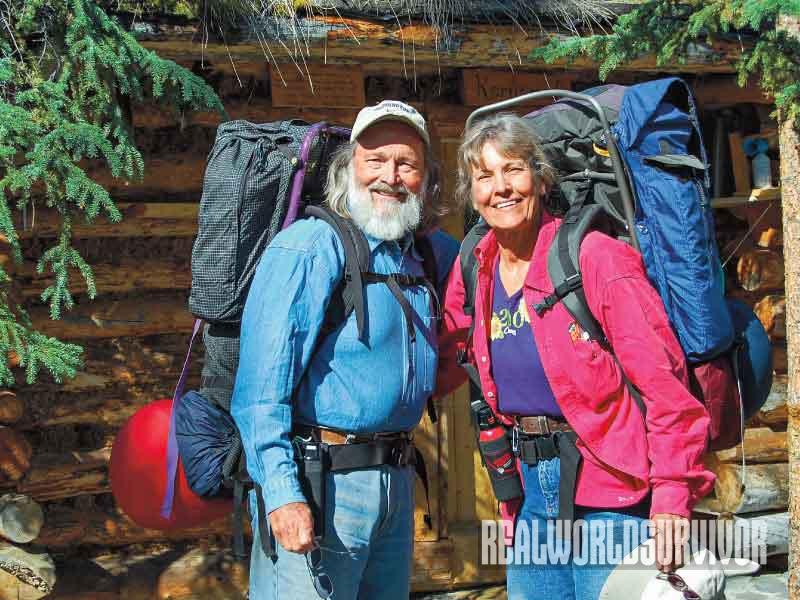
After felling a tree, limbing it and dragging it out of the forest, we sometimes return to carry the limbs, bark and spruce needles to the river’s cut bank where they will await the spring flood. This gives the forest floor a better chance of rebounding stronger and more quickly, and it aids the mulching of gravel bars and islands down river. If you want the local forest to retain the nutrients from the tree, just spread the items about in a thin layer so as not to impede the natural growth. Removing the bark from a log at the fall site will make dragging it easier and leave less duff in your cabin yard, but this places on you the responsibility of cleaning up if you wish to be a good steward of the area.
Chinking Supplies
We use moss, the material available in our locale. We fashioned a tool to pack the moss between the logs horizontally. It forces the moss between the logs in a longitudinal direction. The tighter it is packed, the better the insulation. If you try to push the moss between the logs any other way it will simply fall through the wall. Other materials for chinking that work: cement, insulating foam of numerous types, clay, burlap or felt.
Full-Length Logs
I found that it is easier to use full-length logs, not pieces, in walls where doors and windows will be placed. After the logs have been notched and pinned to at least one course above the opening, mark and cut the rough opening. This lends stability to the wall and to the log as you are working on it. I like to cut the headers before securing the log in place. That way I do not have to work over my head with the chainsaw.
Double Cribbing
The use of double cribbing when setting the gable logs makes for a safer and easier installation. I use the term “cribbing” here to mean small logs or boards temporarily affixed to either side of a wall to keep the next log up from rolling off the wall. Straight limbs or tree tops and slings, bungies or ratchet straps work well for this.
What Works for You When Building a Log Cabin
Be aware of what works for you and what doesn’t. One of the best things about building in the wilderness (or beyond your neighbors’ view) is that you can do things your way. I was very conscious of having no training and little experience. However, I found that if I allowed myself, I could be creative in figuring out ways to do almost anything. There are a multitude of ways to build and not necessarily any “right” way. If your method gives you a result you like, that’s all you need. Remember to work slowly, safely, and with joy in your heart. Check out part of our process for building a log cabin in the photo gallery below.
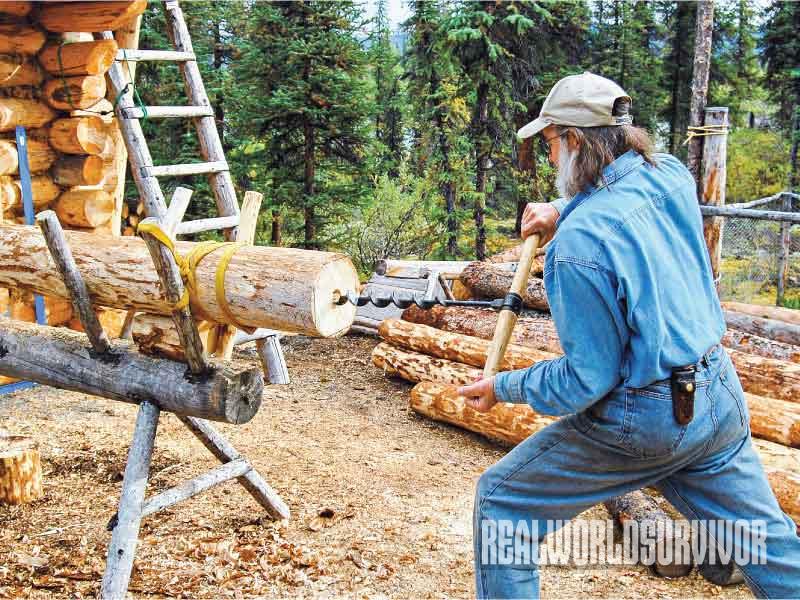
1. Tom uses a hand auger to drill a dowel hole 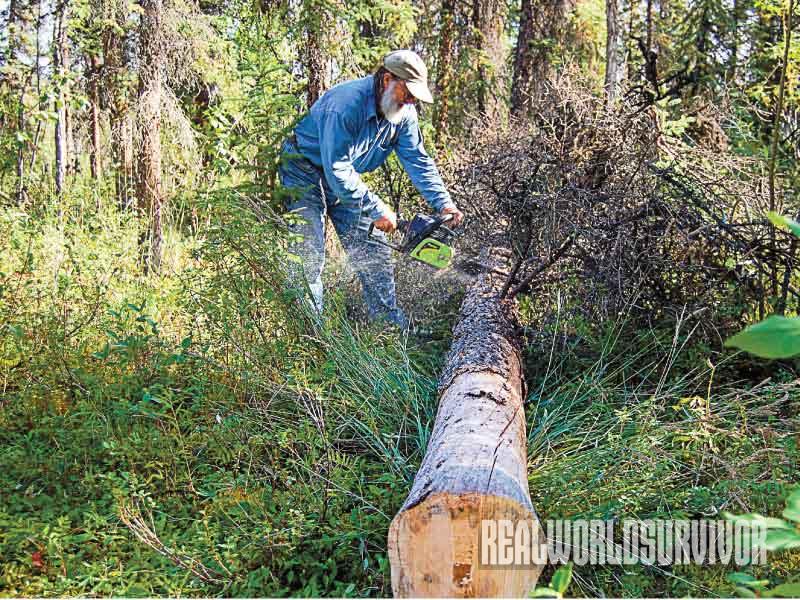
2. Using a chainsaw, he bucks a tree 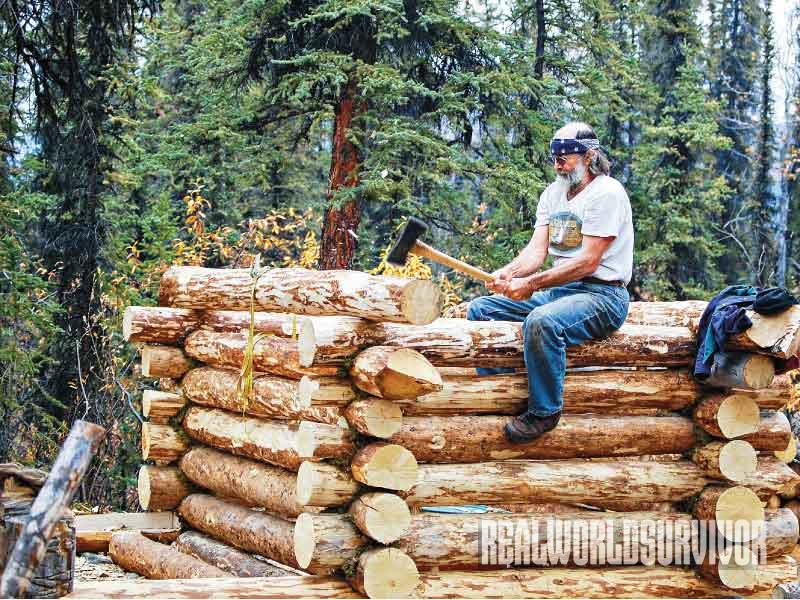
3. After securing a log to another with a nylon ratchet strap, he notches the log 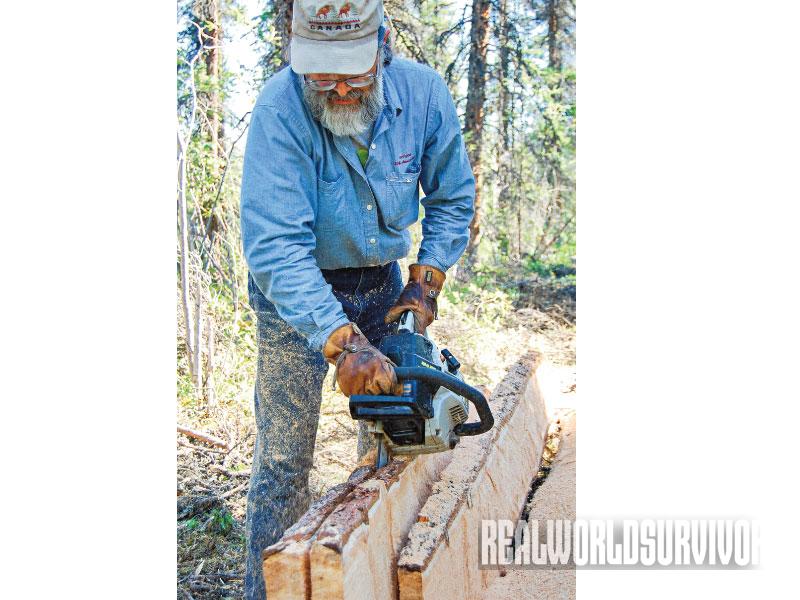
4. Cutting planks with his chainsaw 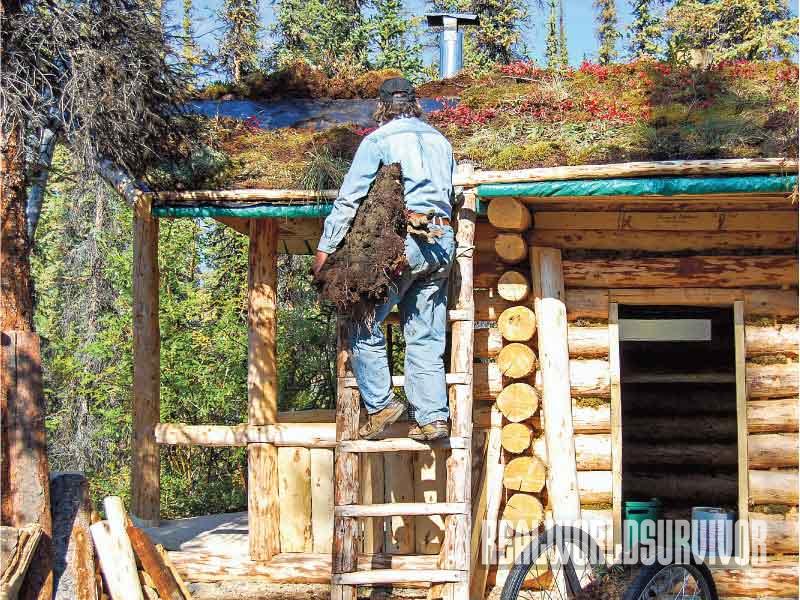
5. Tom carries sod for the roof up a ladder he built 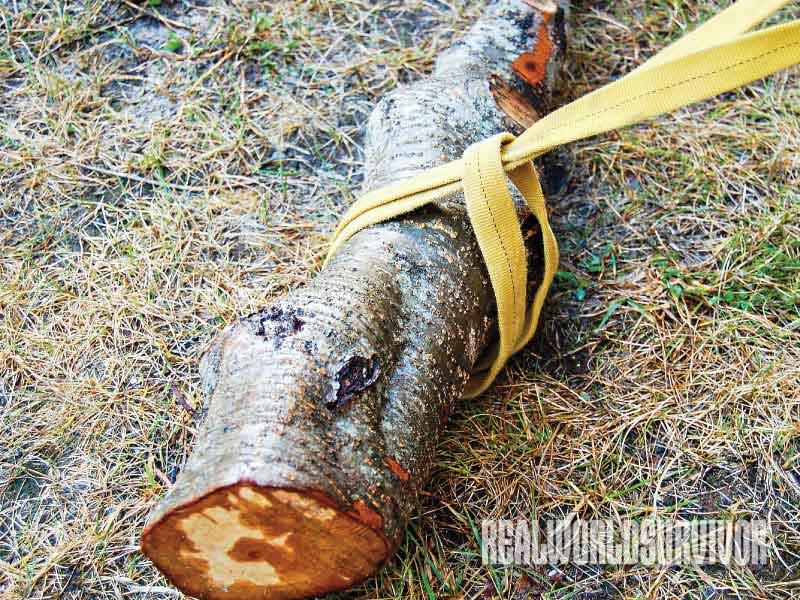
6. A cow-hitch is quick to get on and off and makes dragging, lifting and securing logs much easier 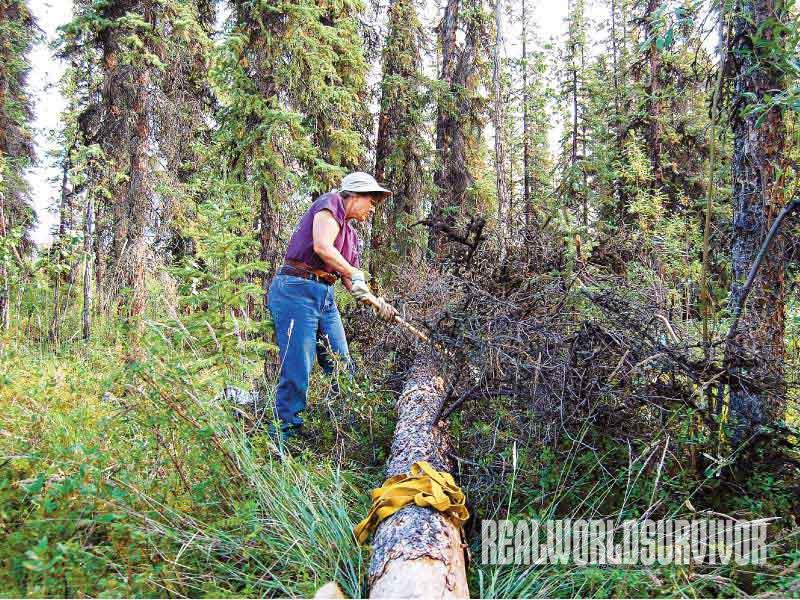
7. Jeanie removes limbs on a log using an axe 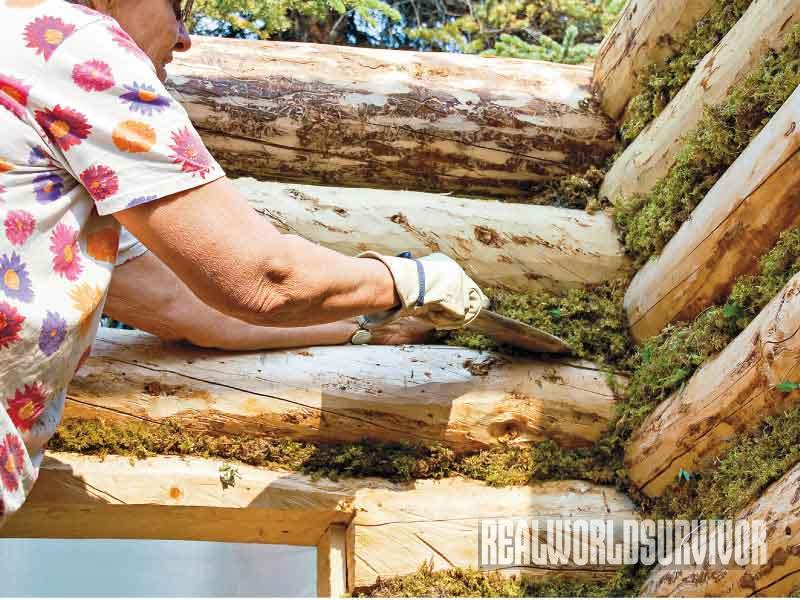
8. Here, she chinks a wall with moss 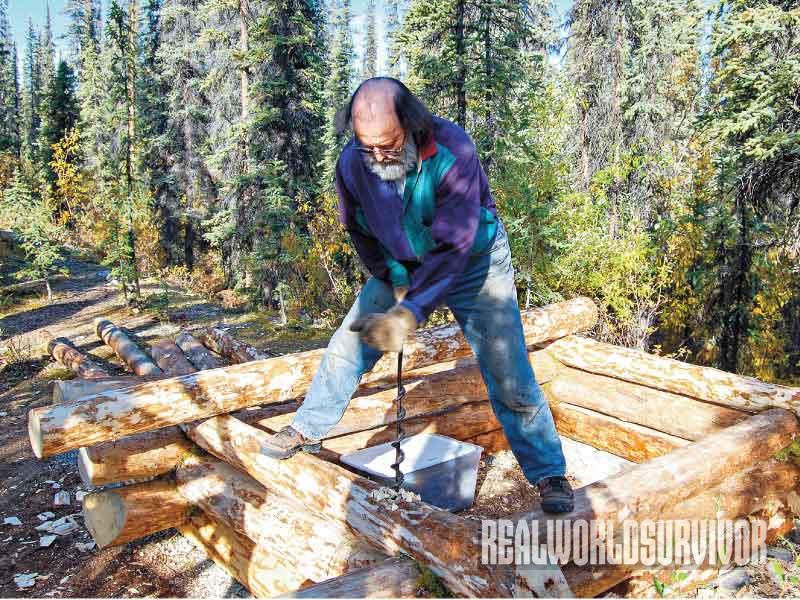
9. Before cutting openings for windows and doors, Tom secures the logs on each side by auguring a hole through the top three logs and inserting dowels, repeating this with each course of logs 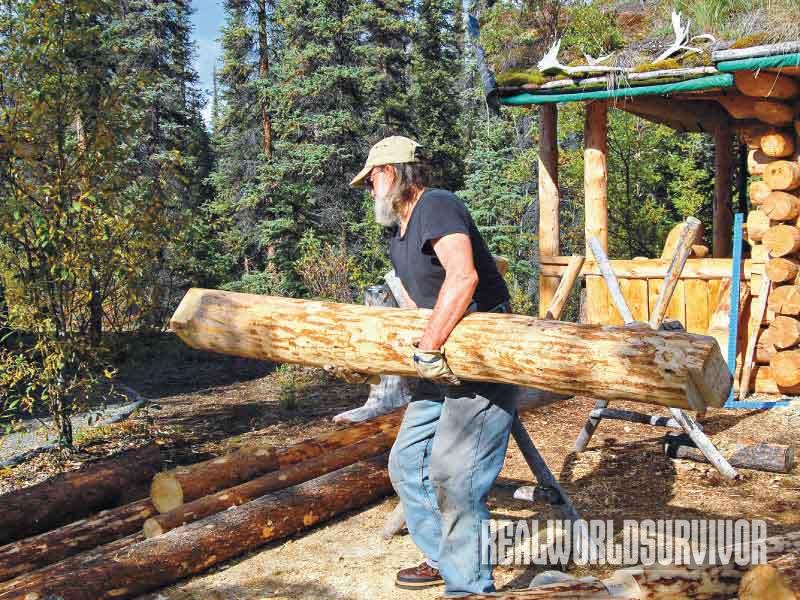
10. Wrestling logs is hard work 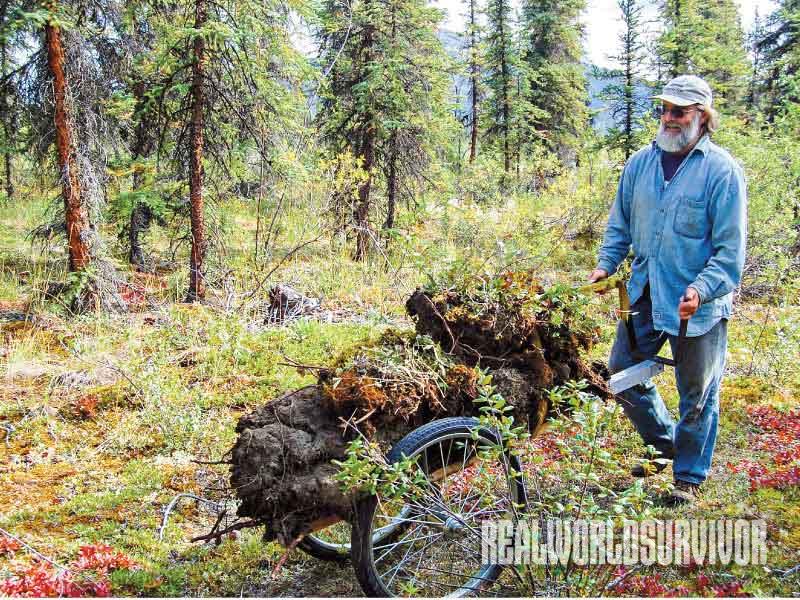
11. Tom hauls sod from the riverbank 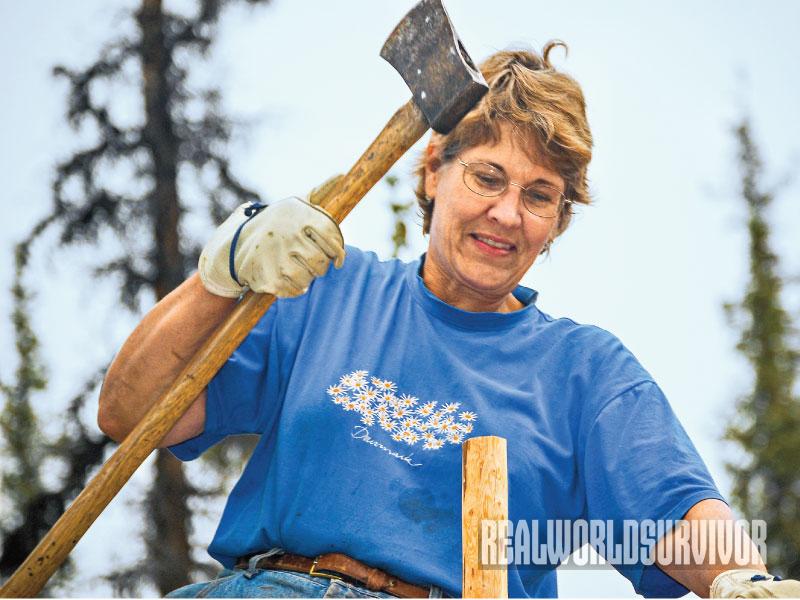
12. Jeanie seats a dowel pin in a log








